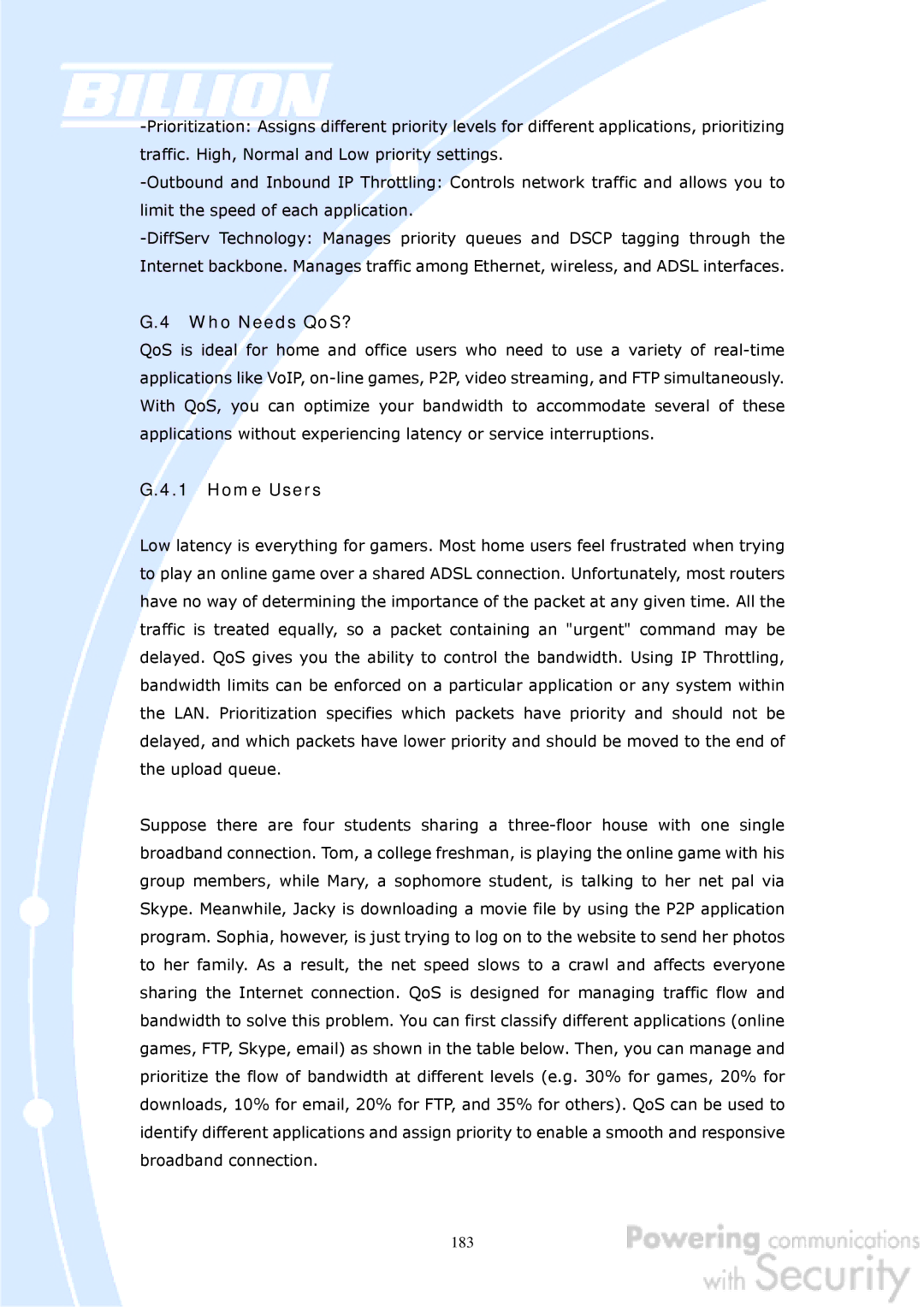-Prioritization: Assigns different priority levels for different applications, prioritizing traffic. High, Normal and Low priority settings.
-Outbound and Inbound IP Throttling: Controls network traffic and allows you to limit the speed of each application.
-DiffServ Technology: Manages priority queues and DSCP tagging through the Internet backbone. Manages traffic among Ethernet, wireless, and ADSL interfaces.
G.4 Who Needs QoS?
QoS is ideal for home and office users who need to use a variety of real-time applications like VoIP, on-line games, P2P, video streaming, and FTP simultaneously. With QoS, you can optimize your bandwidth to accommodate several of these applications without experiencing latency or service interruptions.
G.4.1 Home Users
Low latency is everything for gamers. Most home users feel frustrated when trying to play an online game over a shared ADSL connection. Unfortunately, most routers have no way of determining the importance of the packet at any given time. All the traffic is treated equally, so a packet containing an "urgent" command may be delayed. QoS gives you the ability to control the bandwidth. Using IP Throttling, bandwidth limits can be enforced on a particular application or any system within the LAN. Prioritization specifies which packets have priority and should not be delayed, and which packets have lower priority and should be moved to the end of the upload queue.
Suppose there are four students sharing a three-floor house with one single broadband connection. Tom, a college freshman, is playing the online game with his group members, while Mary, a sophomore student, is talking to her net pal via Skype. Meanwhile, Jacky is downloading a movie file by using the P2P application program. Sophia, however, is just trying to log on to the website to send her photos to her family. As a result, the net speed slows to a crawl and affects everyone sharing the Internet connection. QoS is designed for managing traffic flow and bandwidth to solve this problem. You can first classify different applications (online games, FTP, Skype, email) as shown in the table below. Then, you can manage and prioritize the flow of bandwidth at different levels (e.g. 30% for games, 20% for downloads, 10% for email, 20% for FTP, and 35% for others). QoS can be used to identify different applications and assign priority to enable a smooth and responsive broadband connection.
183

